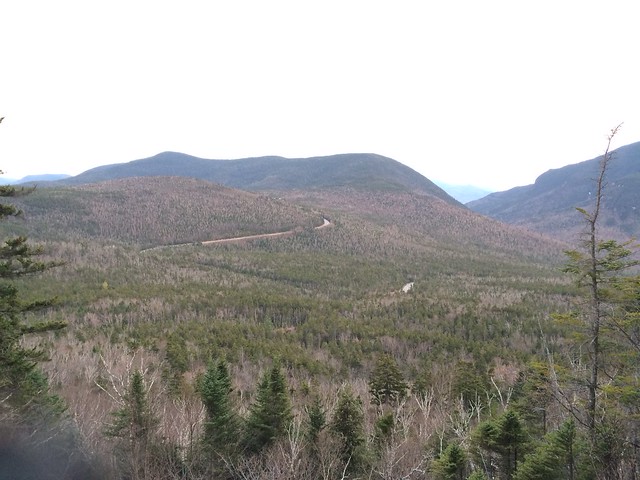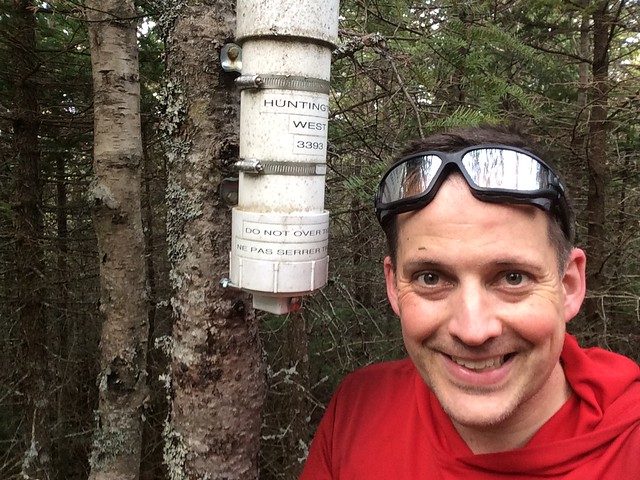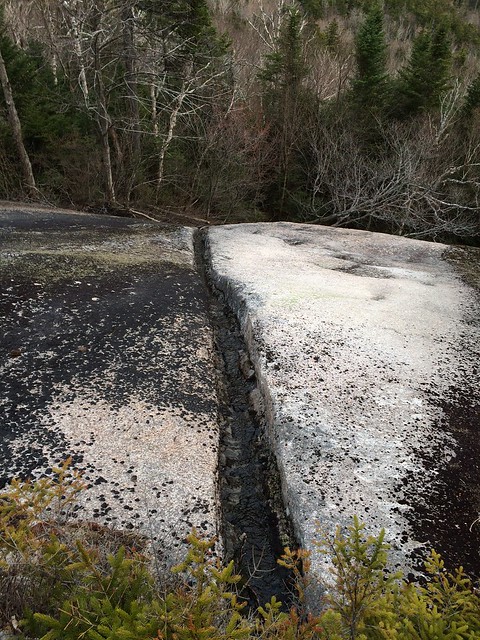SpencerVT
Member
Since I learned last week that Jefferson Notch Road was still closed, we decided to wait on Millen Hill and Mt. Dartmouth. Instead my wife and I headed up the Kancamagus Pass to attempt to the hike the 4 Huntington Peaks above 3000'. Tough thick Class 4 bushwhack 90% of the entire day. I am starting to think that everything off of the upper part of the Kanc between Lincoln and Conway is just brutally uncompromisingly thick. We got a nice early start of 12 Noon and headed up to do the easternmost Huntington first since it is the most remote. The last hundred yards to the top of the nubble were extremely thick prison bar cripplebush that was like nature's violence against hikers.
There is a little clearing at the summit and we signed in at the canister. Next we hit the two Main Huntington peaks both ~3700'. Took a long time to get from the easternmost Huntington to the first main peak. Still a good amount of snow in the shadows at that elevation. However, the easiest part of the day was hiking between the two main Huntington Peaks - the distance is so short it must just barely meet the requirement as a separate peak. Took only like 25 minutes or so to get from one to the other. By this time it was getting late, but despite the intense whacking we decided to push ahead to the westernmost Huntington with the main cliff face. Going along the ridge towards the westernmost Huntington was another brief respite from the spruces of doom, but then soon as we started to drop over into the col it became an all out conifer attack again the rest of the day.
We had to be careful descending off the westernmost Huntington so that we didn't hit the cliffs, but we pretty easily backtracked down to the col and around the cliffs. We did encounter an enormous slide we had to go around on the way back to the Kanc. Made it back to the road at 8:45, nearly 9 hours after commencing the hike. No black flies! A great day - cloudy but not hot, overall nice weather.

View from above the slide on Huntington West looking out towards the Kancamagus.

At the summit of Huntington West 3393'. Averaged less than 1 mile an hour all day.

This water channel in the granite of the slide coming off of the westernmost Huntington was pretty fascinating. It must've take so many millennia for that tiny amount of water to carve a nearly perfectly straight water channel through the granite.
There is a little clearing at the summit and we signed in at the canister. Next we hit the two Main Huntington peaks both ~3700'. Took a long time to get from the easternmost Huntington to the first main peak. Still a good amount of snow in the shadows at that elevation. However, the easiest part of the day was hiking between the two main Huntington Peaks - the distance is so short it must just barely meet the requirement as a separate peak. Took only like 25 minutes or so to get from one to the other. By this time it was getting late, but despite the intense whacking we decided to push ahead to the westernmost Huntington with the main cliff face. Going along the ridge towards the westernmost Huntington was another brief respite from the spruces of doom, but then soon as we started to drop over into the col it became an all out conifer attack again the rest of the day.
We had to be careful descending off the westernmost Huntington so that we didn't hit the cliffs, but we pretty easily backtracked down to the col and around the cliffs. We did encounter an enormous slide we had to go around on the way back to the Kanc. Made it back to the road at 8:45, nearly 9 hours after commencing the hike. No black flies! A great day - cloudy but not hot, overall nice weather.

View from above the slide on Huntington West looking out towards the Kancamagus.

At the summit of Huntington West 3393'. Averaged less than 1 mile an hour all day.

This water channel in the granite of the slide coming off of the westernmost Huntington was pretty fascinating. It must've take so many millennia for that tiny amount of water to carve a nearly perfectly straight water channel through the granite.








































![Yellowstone National Park [Map Pack Bundle] (National Geographic Trails Illustrated Map)](https://m.media-amazon.com/images/I/51kGuJ72qjL._SL500_.jpg)













![Grand Teton Day Hikes and National Park Map [Map Pack Bundle] (National Geographic Trails Illustrated Map)](https://m.media-amazon.com/images/I/41DB0jvRnbL._SL500_.jpg)





